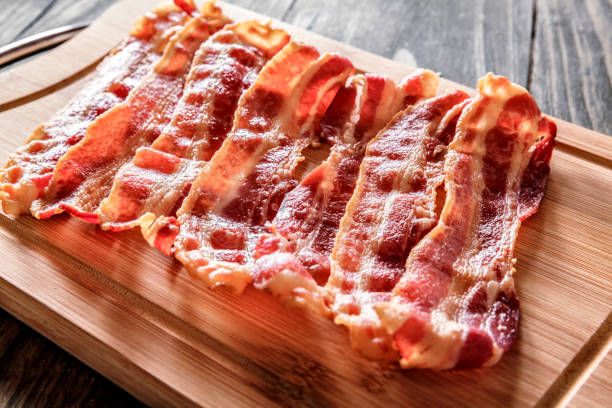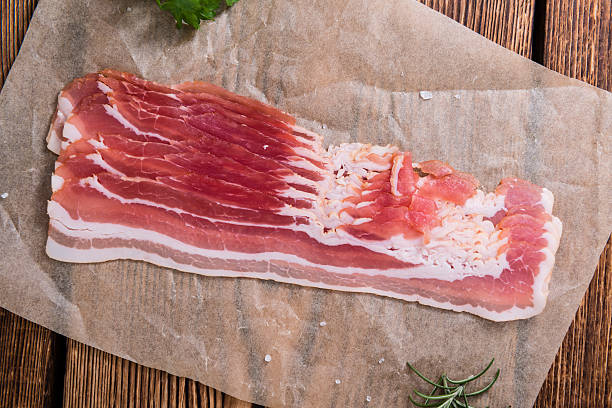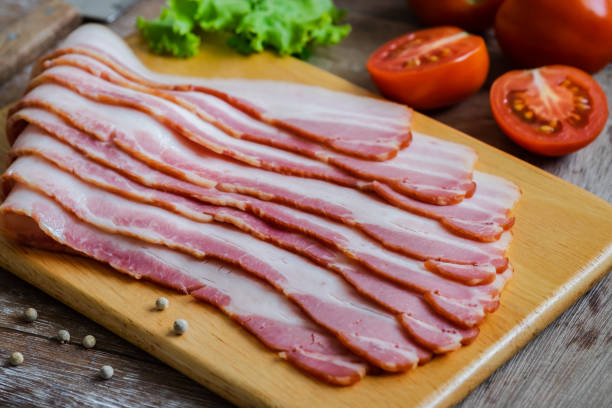Bacon is a popular breakfast food that is enjoyed by people all over the world. It is made from pork belly, which is a cut of meat that is high in fat and protein. One of the most frequently asked questions about bacon is how much protein is in a slice of bacon. In this article, we will explore the protein content of bacon, as well as other nutritional information and tips for incorporating bacon into a healthy diet.
Protein is an essential nutrient that is necessary for the growth and repair of the body’s tissues. It is found in a wide range of foods, including meats, fish, eggs, and dairy products. Bacon is made from pork, which is a good source of protein. A typical slice of bacon contains about 3 grams of protein. This may not seem like a lot, but it is important to remember that bacon is often used as a flavoring agent rather than a main course, so it is typically consumed in small amounts.
While bacon is a good source of protein, it is also high in fat and sodium. A single slice of bacon contains about 4 grams of fat and 150 milligrams of sodium. This can make it a less healthy choice for those who are trying to watch their fat and sodium intake. However, it is possible to enjoy bacon in moderation as part of a healthy diet.
A single slice of bacon contains approximately 3 grams of protein. While this may not seem like a lot, it is important to note that a serving size of bacon is typically only one or two slices. When consumed in moderation as part of a balanced diet, the protein in bacon can contribute to a person’s daily protein needs.
Protein is important for maintaining muscle mass and strength, as well as for repairing tissues that may be damaged during exercise or everyday activities. It is also important for maintaining healthy skin, hair, and nails.
In addition to protein, bacon also contains a significant amount of fat and sodium. It is important to keep track of the total fat and sodium intake when consuming bacon, as consuming too much can increase the risk of heart disease and high blood pressure.
One way to incorporate bacon into a healthy diet is to use it as a flavoring agent rather than a main course. For example, you can crumble a slice of bacon and use it as a topping for a salad or a baked potato. This will add some extra flavor and protein to your meal without adding a lot of extra fat and sodium.
Another option is to choose leaner cuts of bacon. Turkey bacon, for example, is a leaner alternative to traditional pork bacon. It is lower in fat and calories and higher in protein. It has around 2.5 grams of protein per slice.
Bacon can be a part of a healthy diet when consumed in moderation. It is a good source of protein and can be a tasty addition to a variety of dishes. However, it is important to keep track of the total fat and sodium intake when consuming bacon and to make sure that it is consumed as part of a balanced diet.
It’s also important to note that, while bacon is a good source of protein, it’s not the most healthy protein source out there. It’s high in saturated fat and sodium which can have negative health effects if consumed in large amounts. Alternatives such as lean meats like chicken or fish, or plant-based protein sources like beans and lentils, are generally considered to be healthier options.
It’s also worth noting that the protein content of bacon can vary depending on the brand or the way it is prepared. For example, some brands of bacon are lower in sodium, while others are made with leaner cuts of pork. Additionally, some brands of bacon are smoked or cured, which can affect the protein content.
In conclusion, a slice of bacon contains about 3 grams of protein. While it is a good source of protein, it is also high in fat and sodium. To enjoy bacon as part of a healthy diet, it is important to use it in moderation and to choose leaner cuts of bacon. There are many other ways to use bacon as a flavoring agent to add some extra flavor and protein to your meal without adding a lot of extra fat and sodium.

 Home
Home Health
Health Diet & Nutrition
Diet & Nutrition Living Well
Living Well More
More













